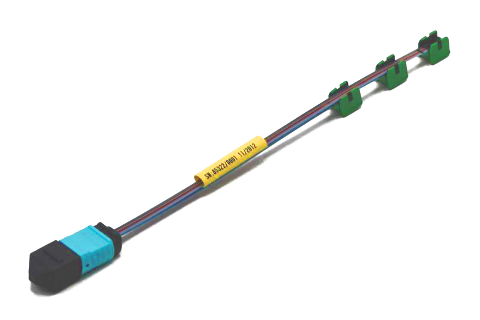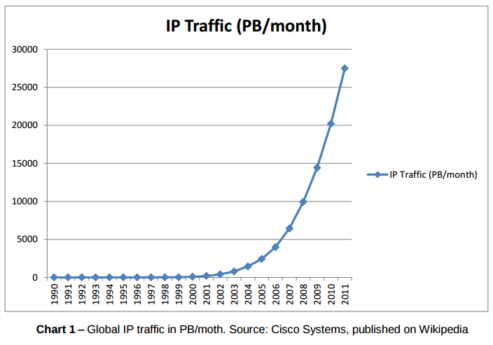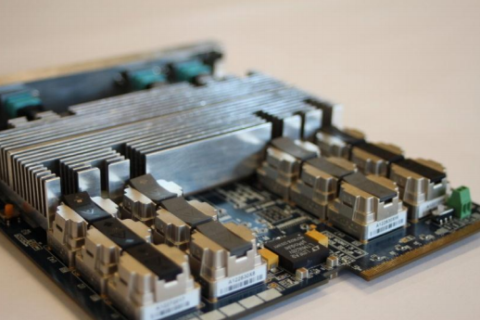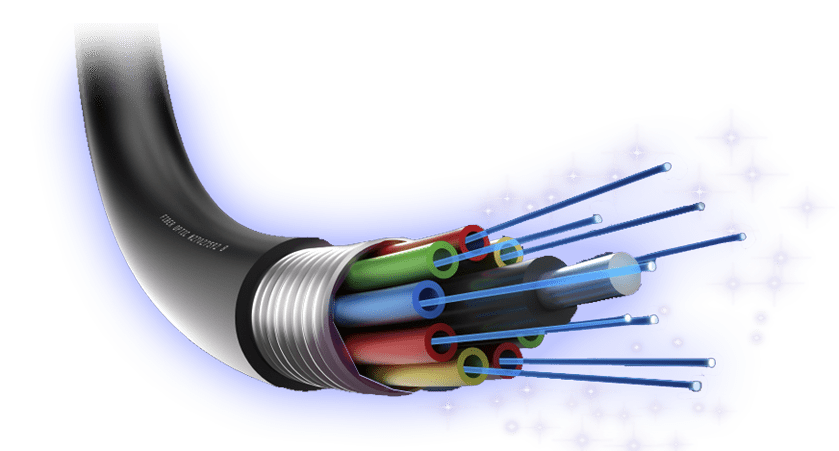
Introduction – current situation
In the past decade there have been huge bandwidth increases in data centers and telecommunication applications resulting in high I/O density requirements for edge-mounted interfaces. High-speed transmission requirements exceed the limits of the conventional copper cablings and push the requirements for the active devices based on the copper cabling to the limits.

To provide suitable solutions for core switches, routers and high-performance computer units, embedded parallel optics modules are directly mounted on the printed circuit boards (PCB). This increases signal integrity, thermal management, density and consolidates I/O and EMI/ESD.
There are more solutions on the market designed for fiber optic interconnection directly on PCB. SYLEX, as a US CONEC approved manufacturer of the PRIZM® LightTurn® connector support developers and manufactures of the active devices by design, manufacturing and supplying the tailored fiber optic assemblies dedicated mainly for transmission modules by AVAGO.
Introduction to technology
PRIZM® LightTurn® connector was designed as a low profile, miniature detachable connector for high-speed optical connection directly on PCB chips. PRIZM® assemblies for onboard mounted AVAGO MiniPOD® and MicroPOD® modules can be produced either with flat ribbon or jacketed round cables. Flat ribbon cables offer low profile with high module density, while round cable offer more flexible routing and ruggedized fiber protection.
SYLEX manufactures custom-designed cable assemblies using combination of the PRIZM® LightTurn® and MTP® connectors to provide a significant increase in card edge port density compared to conventionally used QSFP/QSFP+ modules or parallel active optical cables.

The PRIZM® LightTurn® connector provides passive alignment and novel retention features allowing multiple re-mattings perpendicular to the PCB. The connector consists of a multi-fiber ferrule with a photonic turn TIR (total internal reflection) lens array. This provides excellent coupling to high bandwidth mini-parallel optic AVAGO modules.
Real application – The CMS experiment1
The Compact Muon Solenoid (CMS) is a general purpose detector at the Large Hadron Collider (LHC) performing searches for new physics and tests of the current best model of Universe, the Standard Model. Huge technological challenges are faced in isolating events of interest from the large amount of background processes and in their subsequent reconstruction. The LHC collides protons at a rate of 40 MHz however rare events, such as those containing the Higgs boson, occur far less frequently. It is infeasible to retain every event as this would require an output data rate of > 5000 Tb/s, far exceeding current technological capabilities. To ensure that these rare events are extracted from the large volume of background processes, CMS utilises a sophisticated two-tier trigger system, performing a fast event reconstruction before deciding whether to retain the event or lose it forever. The first layer of the trigger system, the Level-1 (L1) Trigger, must be incredibly fast in performing these tasks which much be achieved in millionths of a second and is hence performed by high-performance custom-built electronics.
New Card development – Master Processor 72
To be able to detect the above mentioned events of the CMS experiment, new card has to be developed.
The Imperial Master Processor, Virtex-7 (MP7) is a high-performance all-optical, datastream processor designed to operate in the challenging conditions of the CMS trigger system at the LHC. Utilising the high performance Xilinx Virtex-7 FPGA and state-of-the-art fibre optics technologies, the MP7 has the capability to input and output data at a rate of 3/4 Tbit per second, equivalent to the mean global traffic of the entire Internet in 2001. These features are crucial in the operation of the trigger at the LHC where a latency budget of 3.2μs is afforded to readout and process the large volume of data from the detector subsystems, equivalent to processing data at a rate of up to 10 Tbits per second. The MP7 is the baseline trigger processor board for the CMS calorimeter trigger upgrade, whose capabilities are expected to achieve an improvement in the physics performance of the CMS detector under the more challenging full-energy and highluminosity conditions that will be experienced in the upgraded LHC beam.
Specifications of used Optical components
Optical Transceivers3

Lorem ipsum dolor sit amet, consectetur adipiscing elit. Ut elit tellus, luctus nec ullamcorper mattis, pulvinar dapibu
The large data processing I/O requirements of the MP7 are met by its optical interface, provided by up to six AVAGO MiniPOD transmitters and six receivers. Designed for the super-computing industry each provides 12 optical links running at up to 10.3 Gbps, giving the MP7 a total optical bandwidth of up to 740 Gbps in each direction. The single interface of the MP7 for the sending and receiving data offers several distinct advantages. The primary advantage is that the board ceases to have a specific role and becomes a truly generic stream-processing engine, the application of the board to a specific task is therefore no longer restricted by the bandwidth and compatibility of each type of interface, but only by the total bandwidth, whilst all specialisation required for a task is contained within the programming of the board and the interconnections between boards.
The large number of high-speed optical links in the MP7 presents a significant design challenge and has therefore been rigorously validated by loop-back tests. Running the links at 10Gbps the MP7 transfers 0.48 Tbps in each direction. To date, the MP7s have transferred in excess of an Exabit of data without an observed error, giving a limit on the per-board bit-error rate of approximately 3 × 10-17 .
Optical Interface
To ensure the best compatibility with existing fiber optic cabling, four industry-standard MTP® adapters are used as the I/O interface in the front-panel of the card. 36-channels on each connector are utilised in standard 48-fiber MTP® connector – all channels within each MTP® carry data in the same direction.
To achieve their small footprint and high data-density, AVAGO MiniPODs use PRIZM® LightTurn® connectors for their optical interface. The transition from PRIZM® LightTurn® connectors to external MTP interconnection cabling is provided by four SYLEX 3xPRIZM-MTP(M)36F OM3 assemblies utilizing unpeelable ribbon, minimizing the risk of damage in the high airflow μTCA-environment.
Complete information about the MP7 card development you can find on following link of Imperial College London, HEP Research Group: http://www.hep.ph.ic.ac.uk/mp7/
1 With approval of Gregory Iles, Imperial College, HEP Research Group. Original text available online at www.hep.ph.ic.ac.uk/mp7/background.html
2 With approval of Gregory Iles, Imperial College, HEP Research Group. Original text available online at www.hep.ph.ic.ac.uk/mp7/background.html
3 With approval of Gregory Iles, Imperial College, HEP Research Group. Original text available online at www.hep.ph.ic.ac.uk/mp7/specifications.html
s leo.

